From Nuclear Power to Renewables
by Vivian Bullinger | 22.11.2018
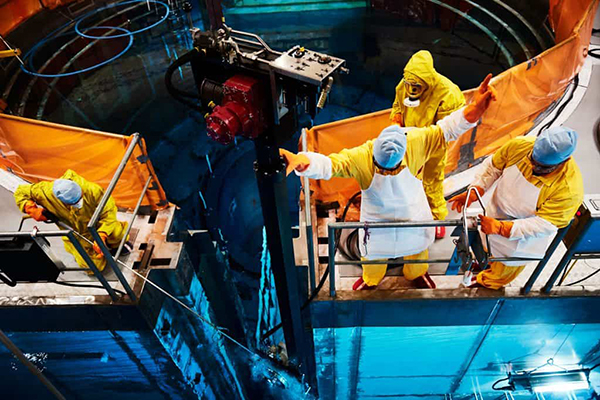
... it is a long, but right path. The example of the Swiss BKW Group shows how this works in practice. The BKW Group is an internationally active energy and infrastructure company headquartered in Bern, Switzerland, and employs approximately 7,000 people.
BKW is the first operator of a nuclear power plant in Switzerland to decommission it. From 2034, the site of the Mühleberg nuclear power plant (KKM) will be available again for industrial or natural use. Up to this point, there is still a lot of work to be done. The nuclear power plant is being rebuilt step by step, from the inside out.
2015 to the end of 2019: Power Operation and Decommissioning Planning
The Mühleberg nuclear power plant will continue to generate electricity safely and reliably until the end of 2019. Its annual electricity production covers around 5 percent of Switzerland's electricity requirements. BKW will finally cease power operation on 20 December 2019.
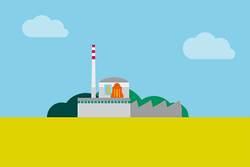
The nuclear power plant in Mühleberg, Switzerland.
In 2020: Preparation for Dismantling
As soon as power operation is finally discontinued, preparations for dismantling will begin immediately. This involves moving the fuel assemblies from the reactor to the fuel pool, where they will decay for several years. Towards the end of 2020, the fuel pool will be operated autonomously. For this reason, BKW is converting the cooling system into a safety system. Now the plant is ready for decommissioning, a point in time is also known as "final decommissioning". After shutdown, the clearance of the turbine building will also begin.
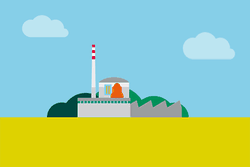
Nuclear power plant after discontinuation of power operation at the end of 2019.
2021 to 2024: Removal of the Fuel Elements
BKW will gradually transport the fuel assemblies from the fuel pool to the central interim storage facility (Zwilag) in Würenlingen. By the end of 2024, there will be no more fuel assemblies in the KKM and over 98 percent of the radioactivity will have been removed from the KKM. At the same time, BKW is continuing to create space in the turbine building and is making preparations for cleaning the radioactively contaminated materials. Where already possible, the first dismantling activities are beginning.
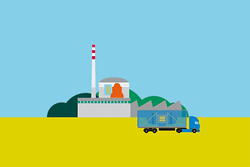
Removal of the fuel assemblies to an interim storage facility. In 2024, there will be no more fuel assemblies in the KKM.
2025 to 2030: Nuclear Dismantling
From 2025, dismantling of all remaining plant components that have come into contact with radioactivity will begin. The dismantling and packaging of the highly radioactive plant components will still take place in the reactor building under water. Most of the other components are sorted in the turbine building, cleaned if possible and then also packaged. As normal waste, the cleaned materials then go to the landfill or, if possible, to recycling. The radioactive waste then goes to Zwilag.
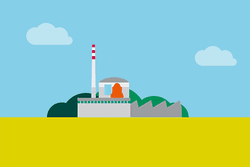
Plant components that have come into contact with radioactivity are dismantled and removed.
In 2031: Release of the Site
At the end of 2030, the KKM will be free of radioactive material. Experts are now inspecting the entire site. If no more radiological hazards are detected, the authorities will release the site for a new use.
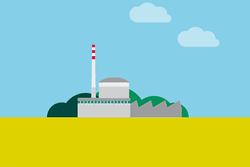
In 2030, the goal is for the KKM to be free of radioactive material.
2031 to 2034: Conventional Dismantling
Depending on whether the site is to be used for industrial or natural purposes in the future, BKW will demolish buildings that are no longer needed during this final phase of decommissioning. The rubble is either sent to landfills for disposal or recycled. From 2034, the site will be available for a new use....

From 2034, the site will be available for a new use.
Further information on the project can be found atwww.bkw.ch/stilllegung
Back to the overview


 The nuclear power plant in Mühleberg, Switzerland.
The nuclear power plant in Mühleberg, Switzerland.
 Nuclear power plant after discontinuation of power operation at the end of 2019.
Nuclear power plant after discontinuation of power operation at the end of 2019.
 Removal of the fuel assemblies to an interim storage facility. In 2024, there will be no more fuel assemblies in the KKM.
Removal of the fuel assemblies to an interim storage facility. In 2024, there will be no more fuel assemblies in the KKM.
 Plant components that have come into contact with radioactivity are dismantled and removed.
Plant components that have come into contact with radioactivity are dismantled and removed.
 In 2030, the goal is for the KKM to be free of radioactive material.
In 2030, the goal is for the KKM to be free of radioactive material.
 From 2034, the site will be available for a new use.
From 2034, the site will be available for a new use.